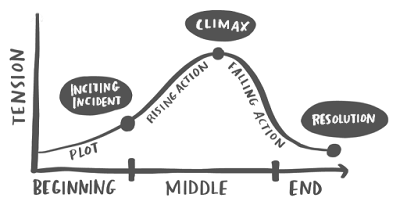The second part of the planning grid (II)
On to the last part of the planning grid now, which focuses on students' production. Through the reception phase, students have been able to enjoy a model text, talk about its content and become familar with its characteristics. The features dealt with can be structural (how ideas are organized), stylistic (how a certain effect is created), linguistic (vocabulary, pronunciation, etc.), and so on. By dealing with these features we are preparing students for their own production. This does not mean, however, that they will be able to speak, write or record straight away. Rather, students will still need some "safe space" to practise the stylistic strategies, use the linguistic elements, put the different parts of a text in the right order, etc. And this is what is done in the guided production stage.
Teachers working with this approach sometimes complain that students depend on them too much for their production, and I often wonder to what extent this could be due to a lack of attention to this guided practice. Knowing what strategies Doris Lessing uses in "Through the Tunnel" to create suspense doesn't mean that I will automatically be able to use them in my own writing. Knowing the kinds of camera shots typical of unboxing videos does not mean that I will be able to combine close-ups and medium shots correctly. In order to help me build up my skills, I need the chance to experiment with these elements in the safe space we mentioned earlier, where I can focus my attention on this particular element in my production, without the pressure of creating a whole new text.
Just what these exercises look like is up to the teacher designing the unit of work, but we have to make sure students get enough focused practice to be able to then incorporate this feature in their final production. Exercises like ordering the elements of a text, taking different shots of the same scene to see how the effect changes, matching emotions to bodily reactions, creating rhyming pairs, etc. can all be included in this stage. I like to think of this guided practice as an opportunity for students to play around with and explore language, ordering of ideas, different camera shots and angles, etc. Once they have built their skill to communicate effectively, students are ready for their final production.
However, even here, in this final production, students' work needs to be scaffolded, at least so they don't lose sight of the features of the kind of text they have to produce. We also need to make sure students are aware that producing a text of a certain complexity and skill requires them to go through a process in which they have to plan, draft, re-write / re-record /rehearse and edit. Most teachers will be familiar with this sequence from the process approach to writing, but a similar sequence is useful for productions in all the different modes. As there is a lot of material available about the process approach, I will only leave you with a graphic representaton here and not go into any further detail about it:





Dear Ana,
ReplyDeleteThank you for this really interesting and useful approach.
Actually, I am using a similar process approach to teaching my Spanish listening/conversation classes at the University of the West Indies (Trinidad&Tobago).
I will learn more about the Literacy Approach.
Thank you very much for this so interesting blog.
Thank you very much for your comment, Romulo. I am glad you find the approach useful!
ReplyDelete